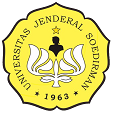Adsorption of Methylene Blue using the Biosorbent of Coconut Fiber Activated by Nitric Acid
Abstract
The textile industry in the world keeps increasing, but it harms environmental pollution caused by textile dye waste. Synthetic dyes contain carcinogenic and mutagenic ingredients that can demage the environment and aquatic biota. The alternative to handling dye pollution with a low-cost method is adsorption using nitric acid-activated coconut fiber. Coconut fiber was an abundant agricultural waste and economical, and it had an active site that contained many compounds such as cellulose, lignin, pyroligneous acid, and tannin molecules. This study used the UV-Vis Spectrophotometer analysis method to determine the effect of pH, contact time, and coconut fiber on the adsorption capacity of methylene blue. The result showed that the optimal conditions for adsorption were a pH of 5, a contact time of 75 minutes, and a percentage adsorption of the variation of contact time of 99.628%. The adsorption study was according to a pseudo-second-order reaction with a constant reaction rate of 0.050 g mg-1 minute-1. The maximum adsorption capacity was 2 mg g-1, with the percentage of methylene blue adsorbed at 99.84%. Adsorption occurs chemically with an energy of 35.4 kJ mol-1, so it can be determined that it occurs with a monolayer mechanism.
Authors agree with the statements below:
- Authors automatically transfer the copyright to the MOLEKUL journal and grant the journal right of first publication with the work simultaneously licensed under a Creative Commons Attribution 4.0 International License (CC BY 4.0).
- Authors are able to enter into separate permission for the non-exclusive distribution of the journal's published version of the work (e.g., post it to an institutional repository or publish it in a book), with an acknowledgment of its initial publication in this journal.













